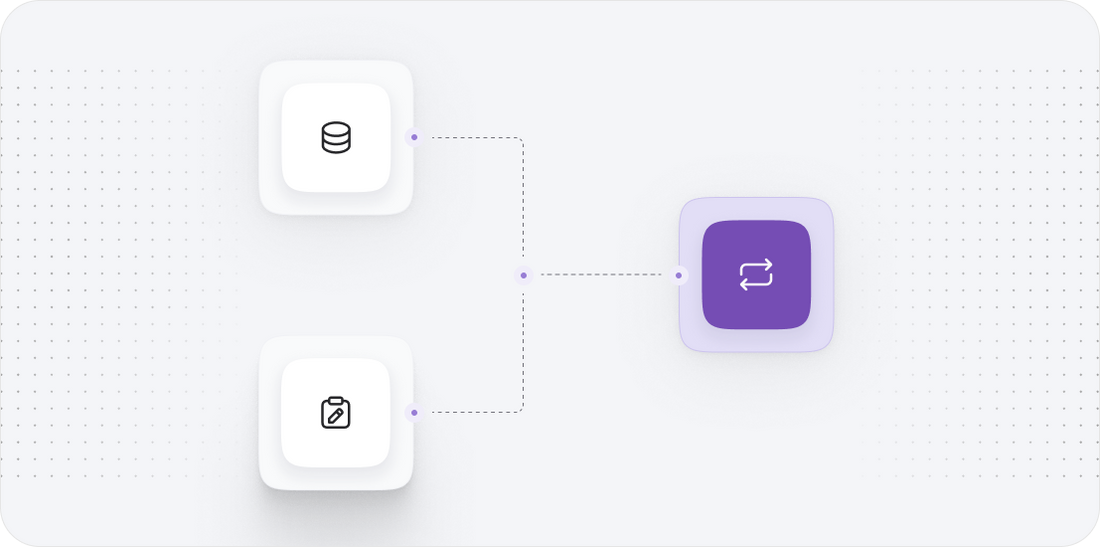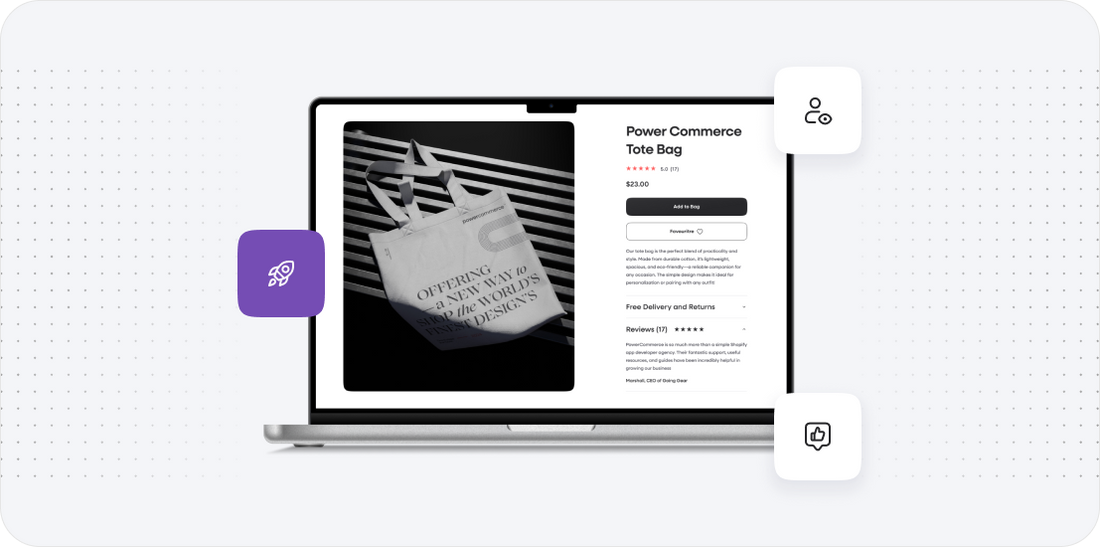





Plentymarkets to Nopcommerce
Migrating your store from Plentymarkets to Nopcommerce might seem daunting, but with proper planning and the right tools, it's a smooth process. Follow this step-by-step guide to ensure a successful transition.
Schedule a call
Step-by-Step Migration Guide: PlentyMarkets to NopCommerce migration guide
Step 1: Prepare Your Existing PlentyMarkets Data
In this initial step, we focus on gathering and preparing all necessary data from your PlentyMarkets store to ensure a seamless migration to NopCommerce.
Step 2: Set Up Your NopCommerce Environment
In this step, we will configure your NopCommerce environment, ensuring it is ready to receive data from PlentyMarkets.
Step 3: Data Mapping and Configuration
In this step, we will map and configure the data from PlentyMarkets to the corresponding fields in NopCommerce.
Step 4: Execute the Migration Process
With everything in place, we can now execute the migration process, transferring data from PlentyMarkets to NopCommerce.
Step 5: Configure NopCommerce Settings
After migration, we will configure essential settings in NopCommerce to optimize performance and functionality.
Step 6: Conduct a Thorough Testing Phase
In this critical step, we will perform extensive testing to ensure everything functions correctly post-migration.
Step 7: Launch Your NopCommerce Store
Finally, we will launch your NopCommerce store, making it live and accessible to customers.
Power Your Step - Get in Touch
Contact PowerCommerce today to leverage our expert migration support for your transition to NopCommerce.
Step 1: Prepare Your Existing PlentyMarkets Data
Before initiating the migration process from PlentyMarkets to NopCommerce, it is essential to prepare your existing data. This preparation phase sets the foundation for a successful transition, ensuring that all necessary information is accurately transferred and retains its integrity in the new environment.
To begin, we need to perform a comprehensive audit of the data currently held in your PlentyMarkets account. This includes products, customers, orders, and any other relevant data that will need to be migrated.
- Identify Data Types: Review the types of data you have, including:
- Products (including variants)
- Customer accounts and their order history
- Categories and tags associated with products
- Promotions and discounts
- Content (blogs, pages)
- Export Data: Use the export functionality within PlentyMarkets to obtain CSV or XML files for each data type. Follow these steps:
- Log into your PlentyMarkets dashboard.
- Navigate to the data export section.
- Select the data type you want to export (e.g., products, customers).
- Choose the format (CSV or XML) and click 'Export'.
- Backup Your Data: Before proceeding, ensure that you have a secure backup of your PlentyMarkets data. This serves as a precautionary measure in case any issues arise during the migration process.
- Data Validation: After exporting the data, open the files to verify that all necessary information has been captured correctly. Look for:
- Missing fields
- Inconsistent formatting
- Errors in product descriptions or pricing
- Document Your Current Setup: Create a document outlining how your current store is structured, including:
- Key categories and subcategories
- Product attributes
- Pricing models and promotions
By completing these preparations, we ensure that we have all necessary data and documentation ready for an efficient migration process to NopCommerce.

Step 2: Set Up Your NopCommerce Environment
With your data prepared, the next step is to set up your NopCommerce environment. This involves creating the necessary infrastructure and configurations to facilitate a smooth migration.
Here’s how we can effectively set up your NopCommerce environment for migration:
- Choose Your Hosting Option: NopCommerce allows for both cloud and on-premise hosting. Decide which option suits your business needs best. If you prefer a hassle-free experience, consider a cloud hosting provider. If customization is crucial, an on-premise solution may be ideal.
- Install NopCommerce: Follow these steps to install NopCommerce:
- Download the latest version of NopCommerce from the official website.
- Follow the installation instructions specific to your hosting environment (IIS for Windows is most common).
- Ensure the database connection is properly configured during installation.
- Configure Basic Settings: After installation, log into the NopCommerce admin panel and adjust the following initial settings:
- Set your store name and URL.
- Configure basic SEO settings, including meta tags for your store.
- Set up payment and shipping methods according to your business model.
- Install Necessary Plugins: NopCommerce has a rich app ecosystem that can enhance functionality. Identify and install essential plugins that support your business needs, such as:
- Payment gateways (PayPal, Stripe)
- Shipping plugins (UPS, FedEx)
- Analytics and marketing tools
- Customize Your Theme: Choose a theme that aligns with your brand. You can customize it further to ensure a seamless transition from PlentyMarkets to NopCommerce:
- Access the theme settings from the admin panel.
- Adjust colors, fonts, and layouts to match your branding.
By thoroughly setting up your NopCommerce environment, we create a solid foundation for the data migration process.

Step 3: Data Mapping and Configuration
Data mapping is a critical phase of the migration process, ensuring that all your information from PlentyMarkets aligns correctly with NopCommerce's structure. This step involves identifying how each piece of data will transfer to its new home.
Here’s how to execute the data mapping and configuration:
- Identify Data Mapping Requirements: For effective data migration, we need to create a mapping document that shows how data fields in PlentyMarkets correlate with NopCommerce fields. This includes:
- Products: Title, Description, SKU, Price
- Categories: Parent category, subcategories
- Customers: First name, last name, email, password
- Orders: Order ID, date, customer info, product details
- Utilize Migration Tools: Consider using migration tools or scripts that facilitate the data transfer, such as:
- API-based migration scripts that automate the process of pulling data from PlentyMarkets and posting it to NopCommerce.
- Third-party tools specifically designed for PlentyMarkets to NopCommerce migrations.
- Perform Testing on Data Mapping: Before executing the full migration, conduct a test migration with a small amount of data. This helps to:
- Verify that the data appears correctly in the new system.
- Identify any discrepancies or issues in mapping.
- Adjust Based on Feedback: Based on the results from the test migration, update the mapping document to correct any issues found. This may involve:
- Changing how certain fields are formatted.
- Adjusting data types to ensure compatibility.
- Finalize Mapping Document: Once testing is successful, finalize the mapping document to serve as a reference during the full data migration.
Through careful data mapping and configuration, we set ourselves up for a successful migration process, minimizing the risk of data loss or corruption.

Step 4: Execute the Migration Process
Now that we have prepared and mapped our data, it’s time to execute the actual migration from PlentyMarkets to NopCommerce. This process involves transferring all identified data types while ensuring data integrity and accuracy.
Here’s how to proceed with the migration:
- Begin the Migration: Launch the migration tool or script that you have chosen, ensuring you follow these steps:
- Input your PlentyMarkets API credentials if using an API-based tool.
- Specify the mapping document to guide the data transfer.
- Start the migration process and monitor for any immediate errors.
- Monitor Progress: Keep an eye on the migration progress through logs or dashboard notifications provided by the migration tool. Look for:
- Successful import messages.
- Warnings or errors that may need addressing.
- Handle Errors: In case of any errors:
- Refer back to the mapping document to check alignment.
- Review logs to identify the source of the problem.
- Validate Data Post-Migration: Once the migration is complete, it’s crucial to validate that all data has been transferred correctly. Perform the following checks:
- Check a sample of products to ensure all fields are populated correctly.
- Review customer accounts for accuracy in data fields.
- Ensure that order history matches what was present in PlentyMarkets.
- Backup NopCommerce Data: After successful migration, create a backup of your NopCommerce data to ensure you have a secure copy of your newly migrated store, protecting against potential issues in the future.
By carefully executing the migration process, we can ensure a smooth transition from PlentyMarkets to NopCommerce.

Step 5: Configure NopCommerce Settings
Once the data has been successfully migrated to NopCommerce, it’s crucial to configure the necessary settings to optimize the store’s performance and functionality. This step ensures that your new store operates efficiently and meets customer expectations.
Here’s how to configure the settings in your NopCommerce store:
- General Settings: Navigate to the configuration settings in the admin panel and adjust the following:
- Store name and URL
- Default currency and tax settings
- Language options for multi-language support
- Payment Gateway Configuration: Set up and test your payment gateways to ensure they are functioning correctly. This includes:
- Enabling desired payment methods (PayPal, Credit Card, etc.).
- Configuring payment settings and ensuring compliance with PCI standards.
- Shipping Settings: Configure your shipping options to ensure accurate calculations and methods. Include:
- Available shipping methods (e.g., flat rate, free shipping).
- Carrier integrations for real-time shipping rates.
- Tax Settings: If applicable, set up tax rates based on your business's operational regions. Ensure compliance with local regulations.
- SEO and Marketing Settings: Optimize your store for search engines by adjusting the following:
- Meta titles and descriptions for all pages.
- URL structure settings for SEO friendliness.
- Install SEO plugins for additional capabilities.
- Test Functionalities: Conduct thorough testing of your store’s functionalities, including:
- Product search and filtering capabilities.
- Checkout process for smooth transactions.
- Customer account creation and management features.
By configuring these settings, we can ensure that your NopCommerce store is fully optimized and ready for customers.

Step 6: Conduct a Thorough Testing Phase
A thorough testing phase is essential to ensure that all functionalities of your NopCommerce store are working as expected after migrating from PlentyMarkets. This step helps identify any issues that may have arisen during or after the migration process.
Here’s how to conduct a comprehensive testing phase:
- Test Data Integrity: Verify that all data has been migrated correctly and is accessible:
- Check products for accurate descriptions, pricing, and images.
- Review customer accounts to ensure order history is intact.
- Ensure categories and navigation are functioning properly.
- Functionality Testing: Test all store functionalities to confirm they operate seamlessly:
- Conduct test purchases to ensure the checkout process is smooth.
- Verify payment gateways are processing correctly.
- Test shipping options and calculations for accuracy.
- Performance Testing: Assess the performance of your store under various conditions:
- Simulate traffic loads to test page load speeds.
- Optimize images and scripts to enhance website speed.
- Cross-Browser Testing: Ensure that your store displays correctly across different browsers and devices:
- Check compatibility with major browsers (Chrome, Firefox, Safari, Edge).
- Test mobile responsiveness for a seamless shopping experience.
- Gather Feedback: If possible, involve a small group of users to navigate the store and provide feedback on usability and functionality.
By performing thorough testing, we can identify and resolve any issues before officially launching your NopCommerce store.

Step 7: Launch Your NopCommerce Store
After completing the migration and testing phases, we are now ready to launch your NopCommerce store. This is an exciting step, as it marks the transition from PlentyMarkets to a fully functional NopCommerce environment.
Here's how to ensure a successful launch:
- Final Review: Perform one last review of all settings and configurations. Confirm that:
- All products are visible and correctly categorized.
- Payment and shipping options are enabled.
- SEO settings are optimized for search engines.
- Go Live: Set your store to live status:
- Remove any maintenance mode settings.
- Ensure the website is accessible to the public.
- Monitor Performance: After launch, closely monitor the store’s performance for any issues:
- Watch for any error messages or performance issues.
- Keep an eye on customer feedback for any usability concerns.
- Promote Your New Store: Utilize marketing strategies to announce the launch:
- Update your social media channels to inform customers of the new store.
- Consider email campaigns to alert existing customers about the transition.
- Run promotions or discounts to attract initial traffic.
- Post-Launch Support: Be prepared to address any questions or issues that arise post-launch:
- Ensure customer support channels are ready to assist.
- Gather insights for ongoing improvements based on customer interactions.
With these steps, we successfully launch your NopCommerce store, providing your customers with a fresh and optimized shopping experience.

Power Your Step - Get in Touch
Ready to take your eCommerce business to the next level? Let PowerCommerce be your partner in migration! Our team of experts is dedicated to ensuring a seamless transition from PlentyMarkets to NopCommerce, minimizing downtime and maximizing your store's performance.
To get started with our expert migration support, follow these steps:
- Visit our Contact Page to fill out our inquiry form.
- Call us directly at 800-099-9090 to speak with a migration specialist.
- Email us at info@powercommerce.com with any questions or to schedule a free consultation.
At PowerCommerce, we believe in innovation, scalability, and customer-centric solutions. Let us help you achieve your eCommerce goals with confidence!
Stay aligned on what's happening in the commerce world
Trusted by 1000+ innovative companies worldwide
Schedule Your Migration Today
For businesses prioritizing simplicity, scalability, and robust support, Shopify is the clear winner.
Looking to migrate without hassle? Power Commerce can handle the entire process, ensuring smooth data transfer, store setup, and post-launch success.
Marka Marulića 2, Sarajevo, 71000 BiH
00387 60 345 5801
info@powercommerce.com


